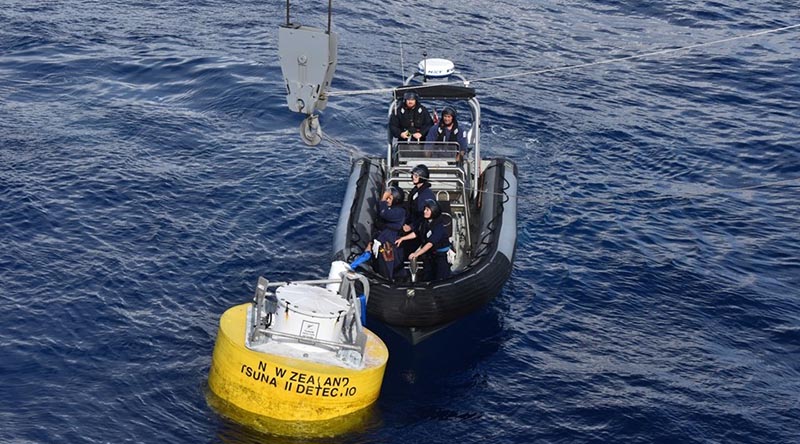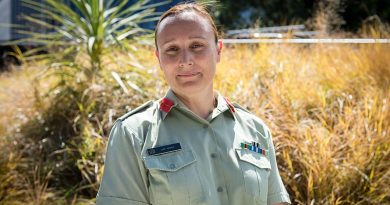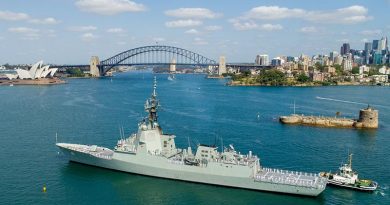Royal NZ Navy rescues lost buoy

This week, in favourable sea conditions and 250 nautical miles southeast of Tonga, the crew of HMNZS Aotearoa retrieved a Deep Ocean Assessment and Reporting of Tsunami (DART) buoy that had been drifting since it broke its mooring in December.
CAPTION: A RHIB crew from HMNZS Aotearoa secures the tsunami-detection buoy in preparation for the ship’s crane to lift it aboard. NZDF photo.
The buoy was part of a network managed by the National Emergency Management Agency that provides tsunami monitoring and detection coverage for New Zealand and the southwest Pacific.
HMNZS Aotearoa was sailing back to New Zealand after three weeks exercising with the Royal Australian Navy off the New South Wales coast when the National Maritime Coordination Centre (NMCC) tasked her to locate and retrieve the 2.5m x 2m buoy, which weighs just over a tonne.
It is thought an intense storm caused the buoy to break free from its mooring. It was reporting its GPS co-ordinates every 24 hours.
Once tasked, Aotearoa altered course to intercept the buoy.
On Wednesday, Aotearoa located it and a rigid hull inflatable crew secured the buoy so it could be craned aboard.
The recovery took four hours from locating the buoy to its secure storage onboard. It will be returned to New Zealand once the ship has undergone its mandatory 14-day quarantine period at sea.
“As the Navy’s new maritime sustainment vessel, Aotearoa was designed to undertake a wide range of tasks,” said Royal New Zealand Navy Maritime Component Commander Commodore Mat Williams.
“These include refuelling ships and helicopters, transporting equipment and supplies, assisting government agency partners in their scientific and research work as well as helping in Humanitarian Aid and Disaster Relief efforts. Now we can add retrieval of tsunami buoys to that ever-growing list.”
Paul Smith, NMCC Director, applauded the successful retrieval as an excellent example of the diverse range of support the New Zealand Defence Force (NZDF) provides to civilian agencies.
“The NZDF and NMCC work very closely together with other agencies to support the effective and efficient use of maritime assets for the benefit of New Zealand,” he said.
Roger Ball, Acting Director Civil Defence Emergency Management, said the buoy retrieval was very welcome news.
“We are very grateful for the assistance of the Navy and the professionalism of officers and crew on Aotearoa in diverting the 2,200 nautical miles to retrieve the buoy and bring it home,” he said.
The network of DART buoys is located in one of the harshest oceans in the world and some degree of downtime is always factored in. However, even following the rare case of a buoy breaking its mooring, the system continued to operate and provide valuable reporting data, he said.
.
.

.
.





